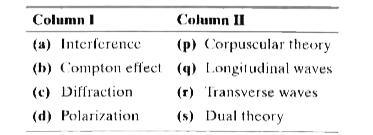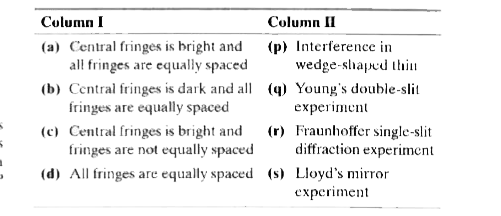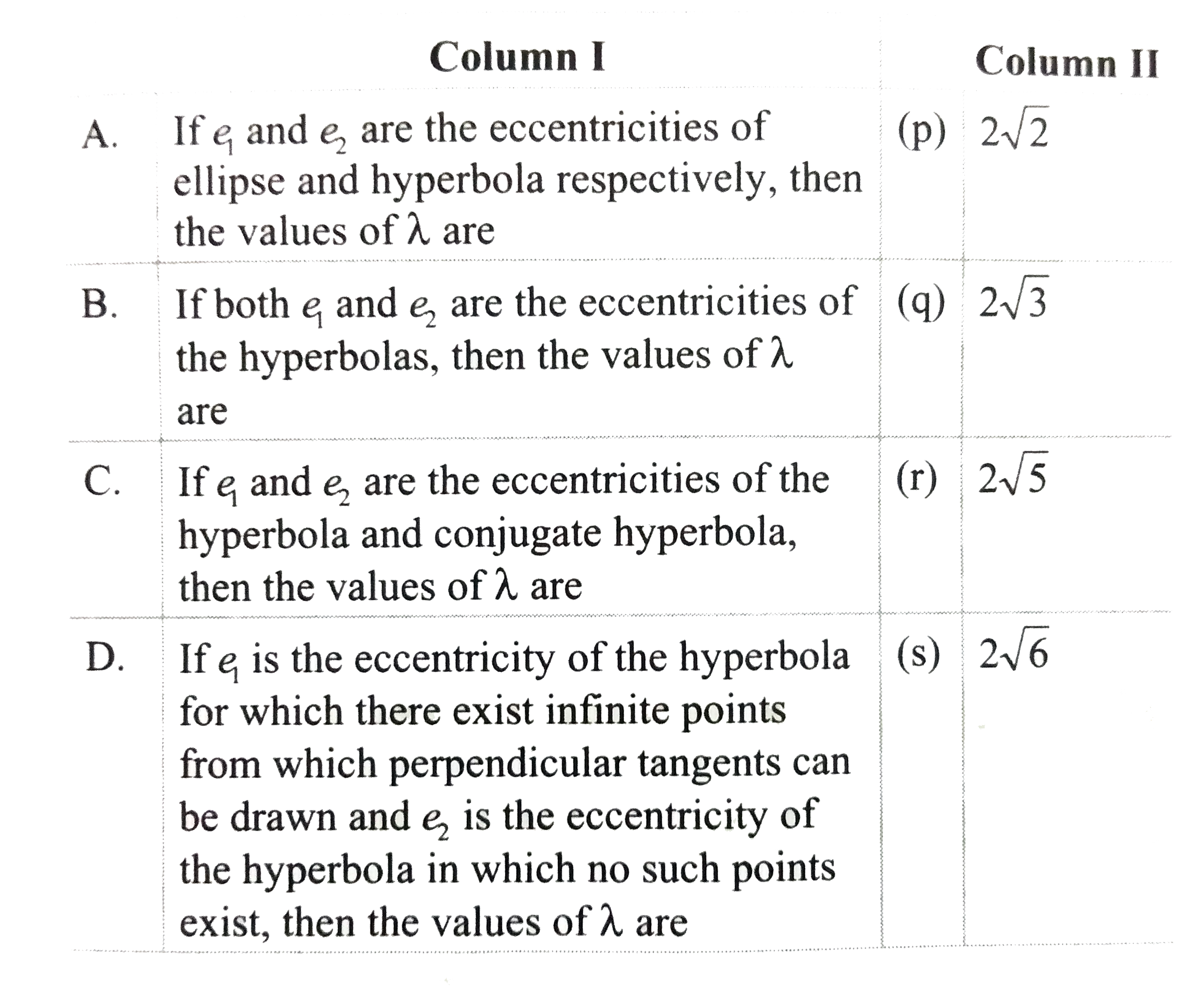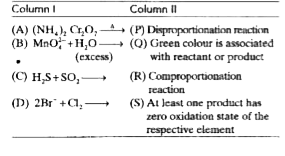Match the statements in Column I labeled as (a), (b), (c ), and (d) with those in Column II labeled as (p), (q), (r ), and (s). Any given statement in Column I can have correct matching with one or more statements in Column II.
An electron in hydrogen atom moves from n=1 to n=2.
Column IColumn II(a) Angular momentum(p) One-forth times(b) Kinetic energy(q) Two times(c) Potential energy(r) Four times(d) Mechanical energy(s) Half times
The correct Answer is:q,p,p,p
Topper's Solved these Questions
- BOOK - RESNICK AND HALLIDAYCHAPTER - ALL ABOUT ATOMS EXERCISE - PRACTICE QUESTIONS (INTEGER TYPE)2videos
ALL ABOUT ATOMS
- BOOK - RESNICK AND HALLIDAYCHAPTER - ALL ABOUT ATOMS EXERCISE - CHECKPOINT1videos
ALL ABOUT ATOMS
- BOOK - RESNICK AND HALLIDAYCHAPTER - ALL ABOUT ATOMS EXERCISE - PRACTICE QUESTIONS (COMPREHENSION)12videos
ALL ABOUT ATOMS
- BOOK - RESNICK AND HALLIDAYCHAPTER - CAPACITANCEEXERCISE - PRACTICE QUESTION (INTEGER TYPE)3videos
CAPACITANCE
Similar Questions
Match the statements in Column I labelled as a,b,c, and d with those in Column II labelled as p,q,r, and s. Any given statement in column I can have correct matching with one or more statements in Column II
 View Solution
View SolutionMatch the statements in Column I labeled as (a), (b), (c), and (d) with those in Column II labeled as (p), (q). (c), and (s). Any given statement in Column I can have correct matching with one or more statements in Column II.
Match the property with the concept it is based on.
 View Solution
View SolutionMatch the statements in Column I labeled as (a), (b), (c), and (d) with those in Column II labeled as (p), (q). (c), and (s). Any given statement in Column I can have correct matching with one or more statements in Column II.
Match the observation given in Column I with the experiments given in Column II.
 View Solution
View SolutionAny given statement in column I can have correct matching with one or more statement(s) given in column II. Match the following.
 View Solution
View SolutionAny given statement in column I can have correct matching with one or more statement(s) given in column II. Q. Match the following.
 View Solution
View SolutionMatch the statements in Column I with those in Column II.Any given statement in Column I can have correct matching with one or more statements in Column II.
 View Solution
View SolutionMatch the statements in Column I labeled as (a), (b), (c ), and (d) with those in Column II labeled as (p), (q), (r ), and (s). Any given statement in Column I can have correct matching with one or more statements in Column II.
Column IColumn II(a) Lithium atom(p) 54.4 eV(b) Helium atom(q) 13.6 eV(c) Beryllium atom(r) 122 eV(d) Hydrogen atom(s) 217.6 eVView SolutionIn each of the following questions, statements are given in two columns, which have to be matched. The statements in Column I are labelled as (A), (B), (C) and (D), while those in Column II are labelled as (P), (Q), (R), (S) and (T). Any given statement in Column I can have correct matching with one or more statements in Column II.
Match the cations with their properties.
 View Solution
View SolutionIn each of the following questions, statements are given in two columns, which have to be matched. The statements in Column I are labelled as (A), (B), (C) and (D), while those in Column II are labelled as (P), (Q), (R), (S) and (T). Any given statement in Column I can have correct matching with one or more statements in Column II.
Match the change observed with the reaction
 View Solution
View SolutionIn each of the following questions, statements are given in two columns, which have to be matched. The statements in Column I are labelled as (A), (B), (C) and (D), while those in Column II are labelled as (P), (Q), (R), (S) and (T). Any given statement in Column I can have correct matching with one or more statements in Column II.
Match the reaction with the type of change.
 View Solution
View Solution

